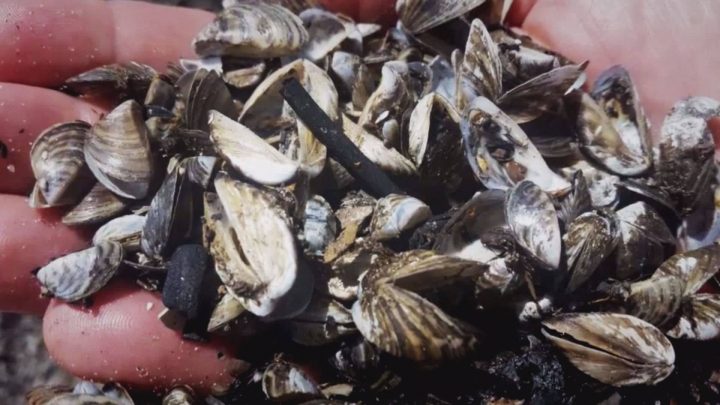No invasive mussels have been found in Saskatchewan water bodies to date and the province wants to keep it that way.

Eight mobile decontamination units are being deployed in Saskatchewan to check watercraft entering the province for aquatic invasive species.
The province says it is one of several programs to prevent this “significant threat” from entering Saskatchewan waters.
“We have only to look to neighbouring provinces and states to see the devastating impact that aquatic invasive species can have, ecologically and economically,” Environment Minister Warren Kaeding said in a statement Monday.
Zebra mussels have been found in some Manitoba waterways, including the southern basin of Lake Winnipeg and in Sipiwesk Lake, while zebra mussel larva has been found in Cedar Lake, which is part of the Saskatchewan River system.
Invasive mussels have also been discovered in Ontario and Quebec, as well as in 34 states, including Montana, North Dakota and Minnesota.
Aquatic invasive species are plants, animals and invertebrates that enter ecosystems where they don’t occur naturally and officials said they are almost impossible to eliminate once established.
Other examples of AIS include quagga mussels, Prussian carp, flowering rush and the spiny waterflea.
“Saskatchewan continues to partner with federal agencies, as well as provincial organizations and provincial governments, to co-ordinate prevention efforts across Western Canada,” Kaeding said.
“The importance of these relationships was highlighted earlier this year, when a serious threat posed by imported aquarium moss balls contaminated with zebra mussels was identified and stopped. Quick and co-ordinated action averted potential disaster for Saskatchewan’s aquatic ecosystems.”
Ministry of Environment officials said in that case, the mussels were extremely small — the size of a grain of sand — and often found inside the moss ball, making them nearly impossible to detect with just a visual inspection.
The province said two of its eight mobile units will be set up along the Manitoba border, three along the U.S. border and the rest strategically placed throughout the province.
Inspection stations in Estevan, Regina, Swift Current, Moosomin and Churchbridge are set to open the week of May 17.
In 2020, 911 watercraft were inspected by ministry officials, with 620 identified as high risk for AIS.
Nine watercraft were found to be contaminated with invasive species and 164 watercraft were decontaminated.
Officials said most of the inspections during 2020 took place near the Manitoba border.
The province is also promoting its clean, drain and dry program.
The program applies to all watercraft brought into Saskatchewan and those being transported between waters in the province.
Owners must clean and inspect everything that comes into contact with water, including trailers and equipment.
They must also drain all on-board water and dry all watercraft and equipment, preferably for up to five days, before transporting.
The drain plug must also be removed while the watercraft is being transported.
Failure to remove the drain plug and not stopping at a watercraft inspection station could result in a $500 fine.
The Ministry of Environment says it continues to work with both the provincial AIS task force and the Invasive Species Centre to educate the public.




Comments